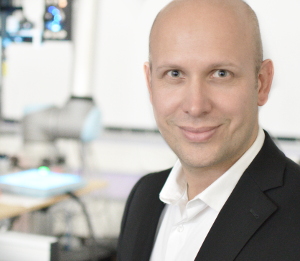Objective assessment of structured surfaces that matches human perception
The standard quality control procedure for structured surfaces of the interior design of passenger aircrafts is a manual inspection of each surface, which is obviously a highly subjective process.
Conventional systems for surface roughness measurements only provide data on standard roughness and typically only measure along a short straight line. Therefore, they are insufficient to correctly capture the visual appearance of such textured surfaces. With these methods, small variations of the surface coarseness that are visible to a human eye are difficult to convert into objective inspection results.
Solution
The T-SCAN sensor provides a robust inspection solution by capturing a surface area which is sufficiently large (typical 50×50 mm) to obtain an accurate assessment of the surface properties (e.g. reflectance) relevant for human impression.
The sensor captures a series of images using different illumination angles that are combined to obtain values of gloss and coarseness (perceived roughness) of the surface. In a first step, these values are used for a reproducible comparison between different surface textures and the definition of tolerance limits which reflect the visual appearance as perceived by a human quality expert. During measurement, the sensor is capturing the surface in 2D and the algorithm provides an accurate value for the surface properties.
Sensor Specifications
- Field of view: 50 x 50mm
- 5″ TFT display
- Battery powered (rechargeable)
- Measurement times 1 sec
- Output: gloss, surface coarseness
Advantages
- Reproducible, objective characterization of structured surfaces
- Good match to human perception
- Well defined tolerance limits
Applicable for a wide range of parts, materials and situations
- Automated inspection of structured surfaces with light color
- Spot-checks on surfaces during aircraft assembly
- Automated scanning during production
Application areas
- Aerospace interior parts


